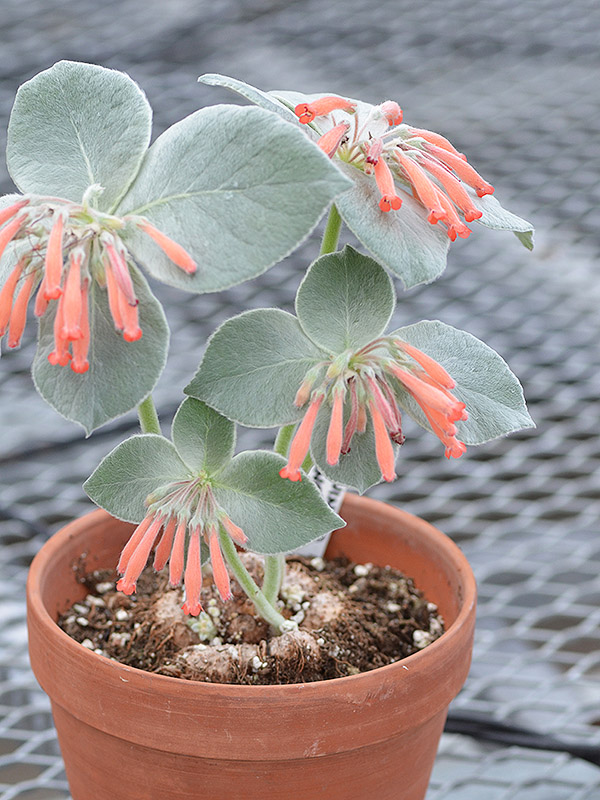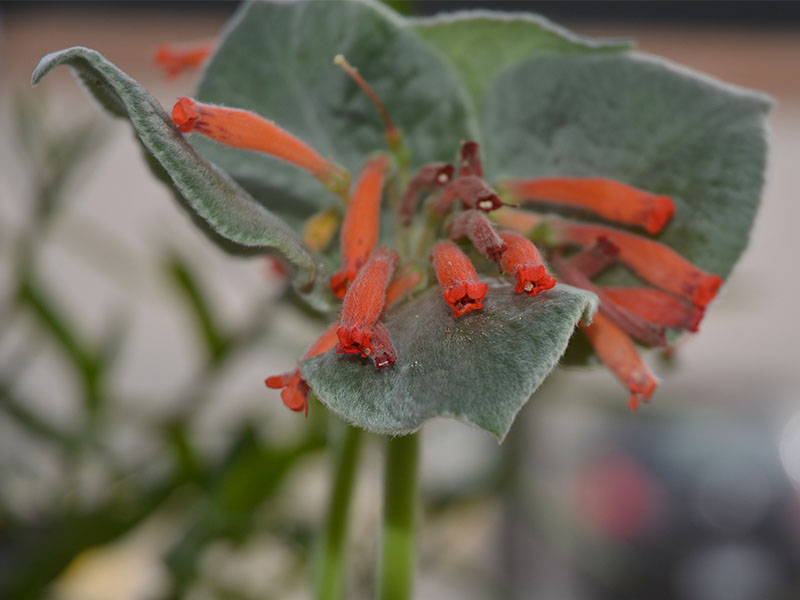
Tropicals > Sinningia > Sinningia canescens > Sinningia canescens
Sinningia canescens
Brazilian Edelweiss
Origin: Brazil.
| Family |
| Gesneriaceae |
| Genus |
| Sinningia |
| Species |
| canescens |
| Category |
| Tropicals |
| USDA Hardiness Zone |
| 9b - 10a |
| Canadian Hardiness Zone |
| Requires cool season protection under glass. |
| RHS Hardiness Zone |
| H3 |
| Temperature (°C) |
| -5 |
| Temperature (°F) |
| 25 |
| Height |
| 0.3 m |
| Spread |
| 0.35 m |
Photographs
Description and Growing Information
Flowering Period
| Cultivation |
| Grow under glass in filtered sun to partial shade in a well-draining, loamless compost soil. If growing outside plant in moist but well-draining neutral to moist soil. |
| Shape |
| Upright tuberous. |
| Growth |
| Slow |
| Pests |
| Glasshouse white fly and leaf hoppers. |
| Bark/Stem Description |
| Upright stems and shoots with a covering of short, fine hair-like fibres. |
| Flower/Leaf Bud Description |
| Insignificant small flower buds. |
| Leaf Description |
| Broad obovate-pinnate leaves with a dense covering of short, fine hair-like fibres and average defined venation. Leaves grow terminally on stems in groups of 4. |
| Flower Description |
| Long tube-like flowers that grow terminal racemes of 5 - 15 in the centre of the leaves. |
| Colour Description |
| Silver-green foliage and stems. White hair-like fibres on the leaves and stems. Coral-pink blooms. |
| Texture Description |
| Hairy. |
| Notable Specimens |
| Fanshawe College, London Ontario, Canada. |
| Propagation |
| Seed, leaf cuttings or division. |



